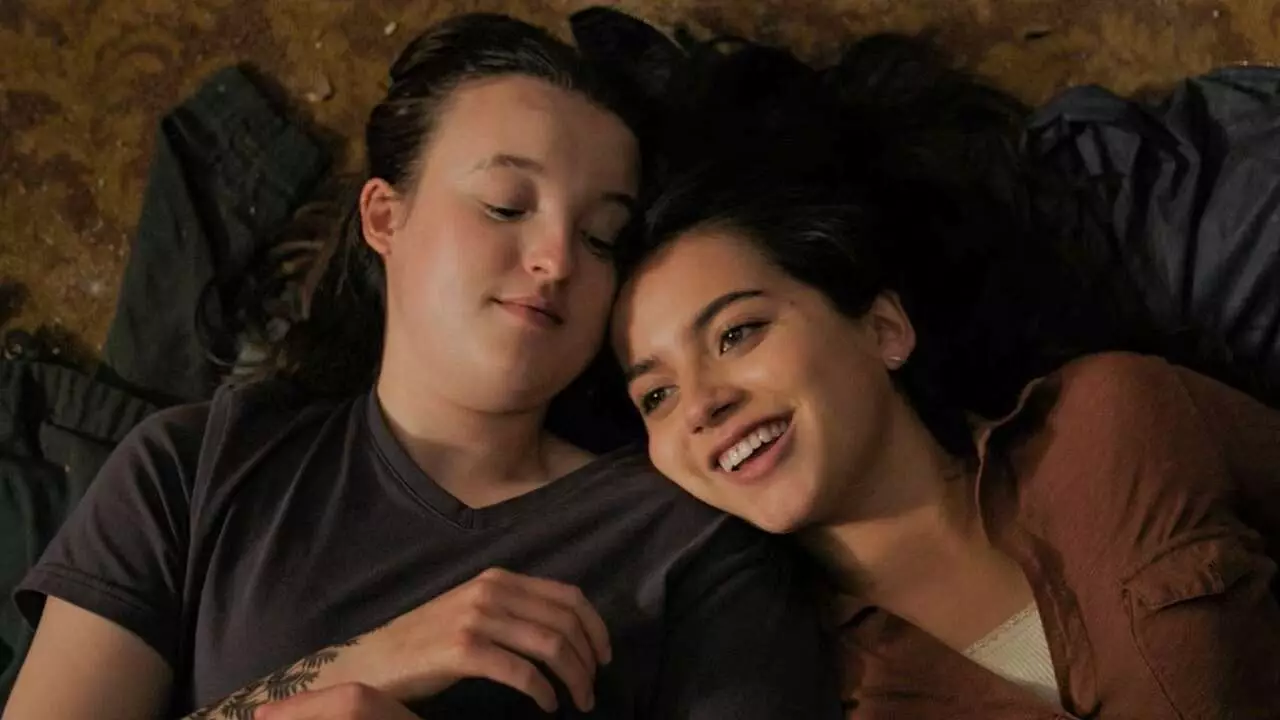HBO’s adaptation of “The Last of Us” is not merely a transition from video game to screen; it stands as a significant cultural event, capturing the imagination of millions. While its first season filled the gaping void left by the conclusion of “Game of Thrones,” the follow-up has begun to expose a darker side of fan engagement, raising critical questions about representation and acceptance within the gaming community and beyond. As the series quickly ascended to the status of must-watch television, it simultaneously unearthed undercurrents of backlash that call into question the dynamics of fandom in the modern age.
Polarized Reception: Critics vs. Fans
Season 2 of “The Last of Us” recently received accolades on platforms like Metacritic, boasting a respectable score of 81 based on expert reviews. Critics praised the show’s depth, storytelling, and emotional resonance. They acknowledged the carefully crafted story arcs, including compelling character developments and stunning visuals that bring the grim yet captivating world of the game to life. However, this critical acclaim is starkly contrasted by the show’s user ratings, where a disconcerting 61% of reviews reflect a backlash rooted in social discourse rather than substantive critique.
The disparity between a critic’s appraisal and the user score illuminates a growing trend wherein fans are responding less to the art itself and more to their personal grievances against perceived cultural shifts. The critiques, or lack thereof, lament the alleged infusion of “woke culture,” with demands for more traditional representations of romance that echo outdated norms, rather than embracing the rich tapestry of human experience presented by the show’s narrative.
A Closer Look at Storytelling and Representation
Take, for instance, the pivotal episode “Day One,” where we are invited to experience a glimpse into Ellie and Dina’s relationship — a narrative that encapsulates themes of love and struggle amidst chaos. While some fans dismiss these developments as unnecessary deviations from the original source material, they neglect the broader implications of storytelling in contemporary media. The emotional scene where Dina reveals her pregnancy with her ex-boyfriend, juxtaposed against the development of Ellie and Dina’s relationship, challenges traditional norms and invites viewers to explore new dimensions of identity and love that exist beyond the conventional confines of heterosexual narratives.
Moreover, the introduction of characters such as Isaac Dixon, with his morally complex backstory, serves to enrich the overarching narrative. While some viewers cling rigidly to their preconceived notions of character arcs, dismissing the exploration of multifaceted identities, the show’s creators are pushing boundaries, inviting discourse on themes of loyalty, betrayal, and survival. Characters are not just vehicles for plot; they become a lens through which viewers must examine their biases and engage with stories that resonate beyond their immediate understanding.
Tackling the Backlash and Its Implications
This backlash is not unprecedented. Many viewers may remember the vitriol aimed at the representation of love and relationships in Season 1, particularly in the episode focusing on Bill and Frank. Ironically, this episode not only showcased diverse representation but also secured Nick Offerman an Emmy for his role. The irony is stark: that which brings fresh narratives and genuine emotional depth is often met with rejection from a segment of the audience who are resistant to change.
What’s particularly troubling is the tendency for this kind of pushback to overshadow the very successes of shows that strive to reflect the complexities of human relationships. By focusing on the superficiality of a perceived “woke agenda,” these detractors detract from the richness of narrative depth, reducing the conversation to a resistance against change rather than embracing it.
Redefining Fan Engagement and Cultural Growth
One cannot ignore the potential for “The Last of Us” to redefine how audiences engage with television and gaming narratives. By showcasing diverse relationships and complex characters, the series challenges its audience to rethink their understanding of love, identity, and humanity, compelling viewers into new territories of empathy and acceptance.
In an ever-evolving media landscape, the responsibility lies with the audience to approach storytelling with openness and curiosity rather than preconceptions. Rather than succumbing to reductive criticism that misses the heart of the narrative, viewers have the opportunity to grow alongside the stories being told, fostering a culture that embraces complexity instead of shunning it.
In essence, “The Last of Us” becomes not just a story of survival in a post-apocalyptic world, but a mirror reflecting the struggles, fears, and aspirations of its audience, urging them to confront their biases and expand their horizons.

